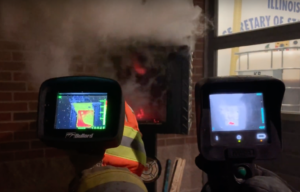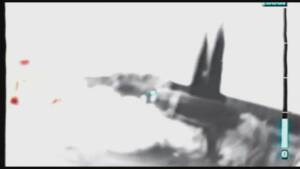When it’s time to upgrade your thermal imager technology
When you look at how the Fire Service has progressed over the years, significant changes in polices, recommendations and NFPA Standards have taken place for the betterment of the service. My first SCBA consisted of a steel tank, the most cumbersome regulator that you can imagine, and a facemask that made you feel like a scuba diver. We won’t mention how much it all weighed!
Just imagine the old black & white TV set that had all those knobs and dials for fine tuning and the rabbit ears on top for channels and picture reception. Now go to your local electronics store and see they're latest and greatest for high-definition smart TV’s! I am sure you will be amazed with today’s technology, improvements, and competitive pricing. This is the same situation of drastic change and improvements in the world of thermal imagers.
For most of the equipment, there are known guidelines of when it is time to replace:
- Personal Protective Equipment (PPE) – 10 years
- Fire Apparatus depending on the type of Department (i.e., frontline, engine, ladder, rescue) – 8 to 25 years
- Self-Contained Breathing Apparatus (SCBA)- 10 years
- Fire Hose – good until it fails the annual testing, or some fire department operate on a 6 to 10 year equipment replacement cycle
However, thermal imagers (TI’s) have no time frame since they became available for use in the Fire Service, so when do you replace them?
NFPA Requirements
The current NFPA 1801 – 2021 standard does not stipulate a replacement time of a TI nor that a fire department must purchase a certified TI. However, it does outline key requirements for the betterment of the fire service:
- 6.1.2 All thermal imagers shall be capable of continuously operating for a minimum of 120 minutes in TI Basic mode without the power source being changed or recharged.
- 6.1.5 The thermal imager shall incorporate a sensor engine consisting of an infrared sensor with at least 76,800 imaging pixels.
- 6.1.7 All thermal imagers shall have a minimum video refresh rate of 25 frames per second in both the detector and the display.
- 6.6.1 The thermal imager shall have a viewing area that contains operational information for the thermal imager user.
- 6.6.4.1.4 Where the thermal imager is equipped with temperature measurement, the viewing area shall include a numeric temperature indicator, a temperature bar, or both.
- 6.6.4.2.2 Colorization shall overlay the grayscale thermal images produced by the thermal imager. Details within the thermal image and within the colorization area shall remain resolvable by the user other than at saturation.
- 6.6.4.2.3 The colors yellow, orange, and red shall have a corresponding, temperature-dependent change in hue as temperatures increase.
- 6.6.4.6.1 All thermal imagers equipped with a low sensitivity mode shall have a low sensitivity mode indicator.
These are just a few examples taken from the NFPA 1801 – 2021 Standard on Thermal Imagers for the Fire Service.

Imager on left is newer technology, imager on right is older technology. (Photo courtesy of Max Fire Box)
Considerations
Older technology has limitations to conducting a victim search or ensuring the safety of a crew during an initial fire attack. For example, older technology may not be able to accurately read convection air currents or locate a means of egress in case of a bailout. It's important for first responders to have access to the most advanced technology possible in order to effectively and safely carry out their duties. Consider the following:
- What is your imager’s refresh or update rate? How quickly does your imager’s shutter inside refresh when you are scanning around and it switches between high and low gain modes (i.e., 25 Hz to 60 Hz)?
- What is your imagers screen resolution: 80×60, 160×120, 240×180, 320×240?
- Does your imager screen show detailed convection heat currents?
- Does your imager screen show transparent yellow, orange, and red colorization?
- What is the runtime of your TI? How long do your batteries last?
- Is your imager equipped with any additional color information modes? Are they confusing?
- Has your FD ever received any formal thermal imaging training not only on the imager but on the various applications it can be used for?

Older technology distinguishing the FF only visible by his SCBA as he is laying on the floor next to the fire. (Photo courtesy of Bullard)
Conclusion
Thermal Imaging manufactures have come along ways in improving their technology and more importantly pricing has become very competitive. When you think it is time for replacement, reach out to your local distributor or sales representative for a presentation on their latest technology and what they have to offer. Establish a committee and create an evaluation guide form to follow as to what it is that you are looking for in a thermal imager. All imagers look great in a boardroom setting but get them into high heat where the action is, and things will change.
If missing important detail in your current TI leaves your crews in danger, it's time to upgrade your thermal imagers.
Until next time stay safe & train often!
This article by Manfred Kihn was published in Fire Apparatus Magazine in February issue 2023.



